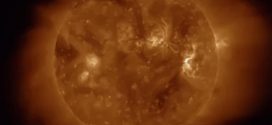The shocking news of an Ohio teen who died of a caffeine overdose in May highlighted the potential dangers of the normally well-tolerated and mass-consumed substance. To help prevent serious health problems that can arise from consuming too much caffeine, scientists are reporting progress toward a rapid, at-home test to detect even low levels of the stimulant in most beverages and even breast milk. Their report appears in ACS’ Journal of Agricultural and Food Chemistry.
Mani Subramanian and colleagues note that caffeine’s popularity as a “pick-me-up” has led to it being added to more than 570 beverages and 150 food products, including gums and jelly beans. It also comes in a pure powder form that consumers can use themselves to spike drinks and food. In small amounts, most people can handle caffeine without a problem. But excessive doses can lead to serious health problems, including insomnia, hallucinations, vitamin deficiency, several types of cancer and in rare cases, death. Subramanian’s team wanted to develop a quick and easy way for consumers to determine whether the caffeine levels in their foods and drinks fall within a safe range.
They tested an enzyme called caffeine dehydrogenase and found that it could detect caffeine in a variety of drinks — with the exception of teas — within one minute. Also, it was sensitive enough to pick up on caffeine’s presence at concentrations as low as 1 to 5 parts per million, the maximum limit the Food and Drug Administration advises for nursing mothers. They say that their method could be integrated into a dip-stick type of test, like over-the-counter pregnancy tests, that could be used at home.
Agencies/Canadajournal
 Canada Journal – News of the World Articles and videos to bring you the biggest Canadian news stories from across the country every day
Canada Journal – News of the World Articles and videos to bring you the biggest Canadian news stories from across the country every day



